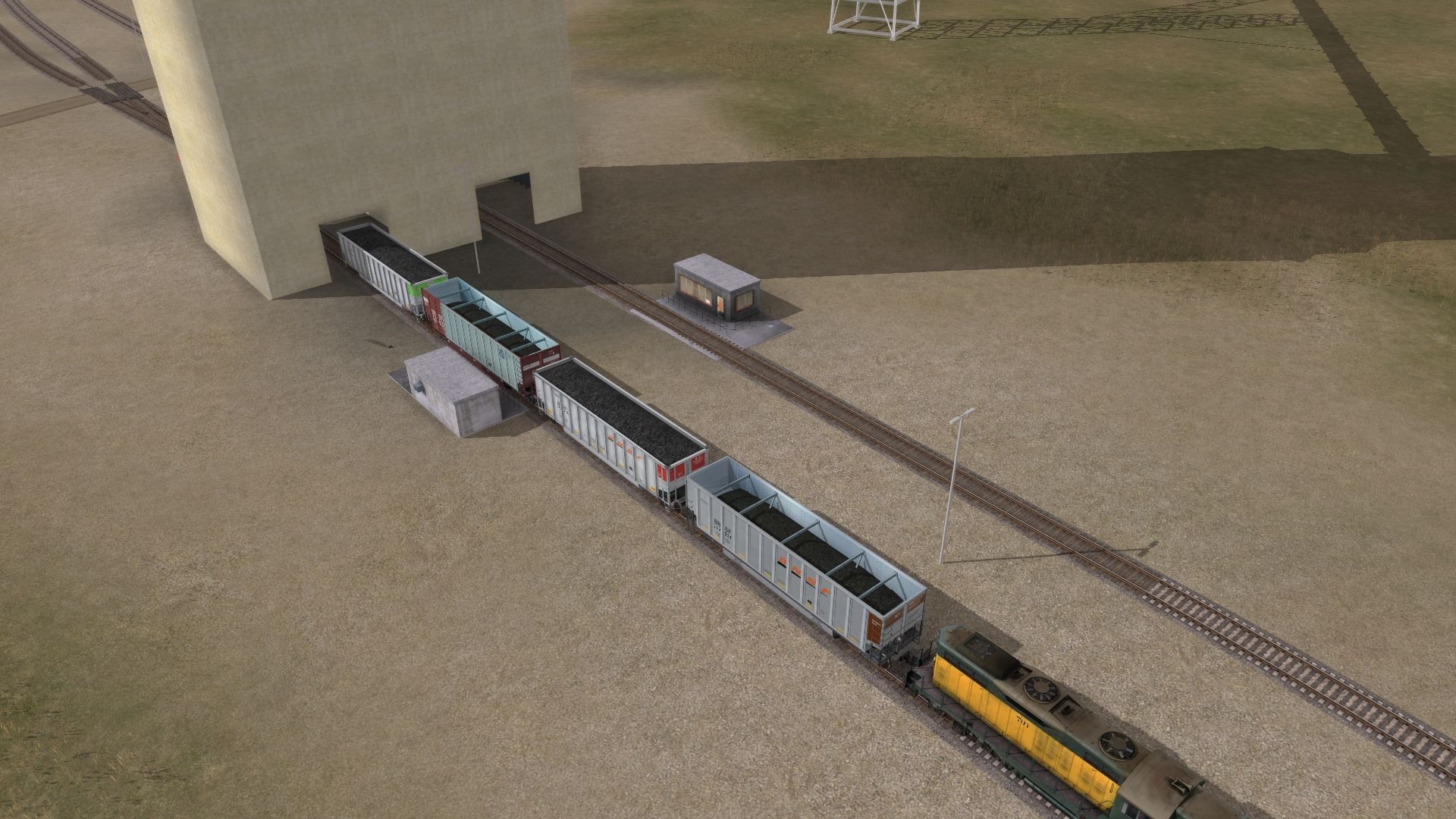Heinrich505
Active member
Hmmm, I only see 60013:2. Maybe it just hasn't gotten to Texas yet.  I checked 60013:2 for asset versions, but there wasn't a newer one.
I checked 60013:2 for asset versions, but there wasn't a newer one.
I'll check in the morning.
I'll check in the morning.
Follow along with the video below to see how to install our site as a web app on your home screen.
Note: This feature may not be available in some browsers.
I only see <kuid2:44179:60013:2> Coal for either CM or DLS as available to download. Where did y'all see that kuid?
Or, perhaps it's only been put out to versions above 105096 (non-plus).
Using the method Zec discusses we still have the problem where a heavy cargo would not fill the "real" hopper up when it reached the max weight limit but we'd see the hopper 100% full in Trainz because the queue we specified is 100% full. Would we need different animations to represent each product density? Or a custom script and a way to determine what % of total hopper volume this queue represents? The actual volume available to load in the real car never changes but doing it this way we have to change that volume for each product carried.
| Item Number | A Car Description and Kuid Number | B Listed Net Car Weight | C Listed/Displayed Load Volume/Weight for Coal at 0.86kg/litre | D Listed/Displayed Maximum Gross Car Weight |
| 1 | Greenville 100 ton Open Top Hopper ATSF/BNSF | 61,800 lbs 30.9 short tons | 3,780 cu ft (x 28.317) = 107038 Litres (x 0.86) 92052 kgs (x 2.205) 202976 lbs ( / 2000) = 101.45 short tons | 263,000 lbs 131.5 short tons |
| 2 | N3V RPPX 100 ton Hopper K 92924:100055 | 26 short tons | 90,800 litres (apply formula) 86 short tons | 112 short tons |
| 3 | PRR H21a Hopper | 37,100 lbs 18.55 short tons | 2620 cu ft = 74190 litres (apply formula) 70.34 short tons | 210,000 lbs 105.5 short tons |
| 4 | N3V H21a Hopper PRR K 68926:19131000 | 22 short tons | 73,840 litres (apply formula) 70.01 short tons | 85 short tons |
| 5 | PRR H43 3 Bay Hopper | 62,300 lbs 31.15 short tons | 3785 cu ft = 107183 litres (apply formula) 101.6 short tons | 265,000 lbs 132.5 short tons |
| 6 | N3V H43 3 Bay Hopper PRR K 2:56063:181001: | 18 short tons | 58,900 litres (apply formula) 55 short tons | 68 short tons |
| 7 | PRR GLa Hopper | 37,100 lbs 18.55 short tons | 2190 cu ft = 62014 litres (apply formula) 58.7 short tons | 138,200 lbs 69.1 short tons |
| 8 | N3V GLa Hopper PRR K 68926:15518308 | 17 short tons | 52,743 litres (apply formula) 50.08 short tons | 63 short tons |
| 9 | Total Prototype weights | 99.15 short tons | 332.09 short tons | 438.6 short tons |
| 10 | N3V Total Weight Sum of above 4 listings As displayed on screen | 81 short tons 82 short tons | 276,283 litres/261 s/tons | 328 tons calculated 320 tons displayed |
| | | | | |
Coal kuid 2:44179:60013:3 was uploaded yesterday?

socalwb909
mass 19005
string-table
{
maxweight "110721.8"
}
coal
{
size 120000
davesnow
mass 18914.800781
string-table
{
maxweight "92442"
}
load
{
size 118931Now that we have more or less solved that issue perhaps you bright folks can help out with a related issue.

These are davesnow's Freightcar America Bethgon CoalPorter and alternately socalwb909's Bethgon Coal Porter.
Code:socalwb909 mass 19005 string-table { maxweight "110721.8" } coal { size 120000 davesnow mass 18914.800781 string-table { maxweight "92442" } load { size 118931
I believe that davesnow's are Coalporter II aluminum body and socalwb909's are the older Coalporter steel body, based on the visual dimensions of the cars but I'm not sure. They may well be the same car allowing for artistic interpretation.
Using the maxweight from socalwb909 in davesnow's car loaded a bit higher but only just over the crossbars. Note that using the "instant load" fills the cars to the top but loading at the flood loader gives the above result. Both cars use the same script and both are loaded with the auran coal product we've been talking about.
I found these
General Dimensions BethGon II
Overall Length Over Coupler Pulling Faces 53' 1"
Truck Centers 40' 6"
Length (inside) 47' 9 1/8"
Width (extreme) 10' 7" 13/32"
Height (rail to top of side) 12' 8 1/2"
Cubic Capacity 4,520 Cu.Ft. = 127,992 Liters
Light Weight 41,700 Lbs. = 18,915 Kg
Load Limit 244,300 Lbs = 110,949 Kg
Gross Rail Load 286,000 Lbs. = 127,727 Kg
